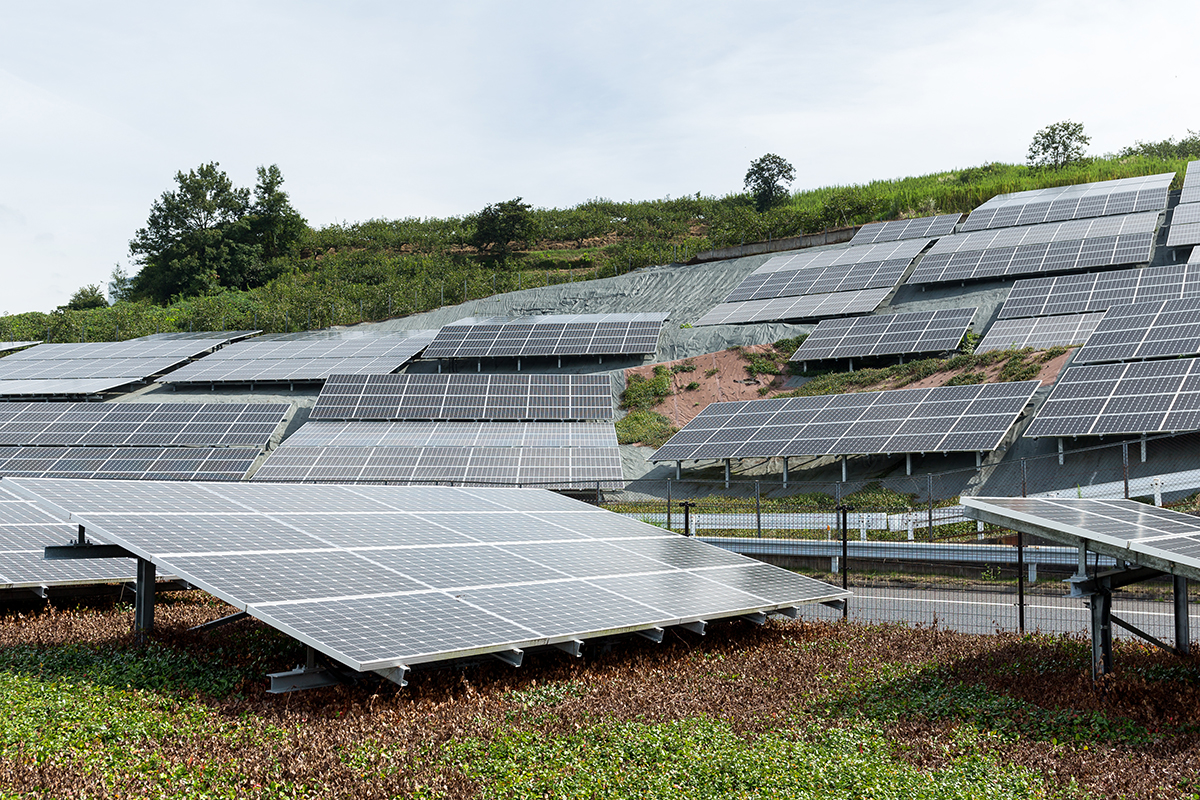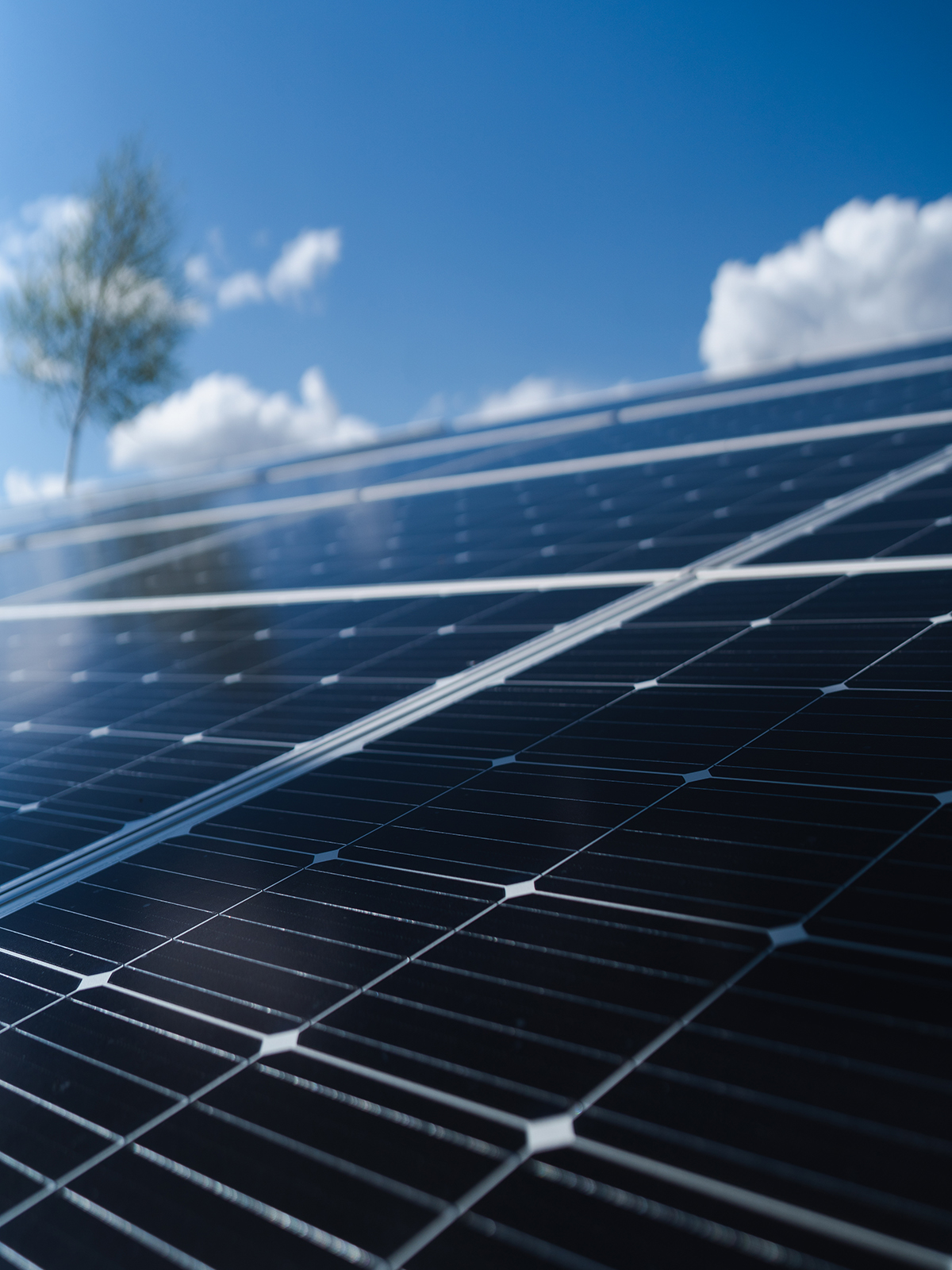
Solar Panel Recycling
As the solar energy industry grows, the number of solar panels being installed worldwide is increasing exponentially. But what happens to these solar panels at the end of their lifespan?
Most recycling plants are not equipped nor have the proper processes in place to recycle solar panels.
At Device Services Group, we have the experience and expertise to recycle solar panels properly. This includes the removal of hazardous and varied materials such as glass, metal, and
plastic. Moreover, we have a process for removing the polymer layers that seal the panels from exposure using high heat.
Recycling solar panels helps to conserve these materials and keep them out of landfills. It also reduces the environmental impact of manufacturing new solar panels.
How to Recycle Solar Panels
Zero Landfill Solar Panel Circular Processing

Step 1 – Do Not Throw Solar Panels in the Garbage/Landfill
Did you experience damage from hail or other severe weather and need to replace your solar panels? Make sure that the type of panel is right for your needs and follow local waste regulations when disposing of them in order not to put any unnecessary risk on yourself. The team at Device Services Group will help identify what kind if the equipment has been lost so it can be recycled properly!

Step 2 – Identifying Your Solar Panel
It’s important to know what type of solar panel you have before deciding how legally dispose of it. Call us or schedule an appointment online, and we will help identify your product; sometimes, the label isn’t clear on these things- so don’t risk throwing away something that could be valuable! We can do testing if needed (and provide disposal options) for businesses in need like yours too.
Monocrystalline (silicon based)
Monocrystalline silicon panels are made of a single crystal meaning that they don’t have grain boundaries. This makes them recyclable through our Solar Panel Recycling Program!
Polycrystalline (silicon based)
Polycrystalline silicon is a type of panel that can be recycled through our Solar Panel Recycling Program. In order for solar panels to work effectively, they need high quality material like poly-silicon which has many small crystals in it rather than just one big crystal like with monocrystals orunia sheets . This means the energy production will always stay consistent because there are no dead spots where nothing happens due only lacklustre conversion rates caused by imperfections during manufacturing processes.
Thin Film
Thinfilm technologies are used to make solar cells that utilize very thin layers of photovoltaic materials deposited over an inexpensive supporting base. Common examples include Copper indium gallium (di)selenide (CIGS), and Cadmium telluride(CdTe). These types require special processing to recycle.

Step 3 – Solar Panel Recycling Options
The generic disposal process for solar panels in America is a bit complicated, but our recycling team will guide you through the details. There are currently no federal regulations on how to handle end-of life products like these and they fall under RCRA guidelines which dictate what must be done with hazardous or nonhazardous solid wastes depending upon their chemical status at time of generation (more info here).
Minnesota and California Solar Panel Regulations and Hazardous Waste Disposal
Minnesota and California have passed regulations regarding solar panel recycling. Other States will soon follow. Device Services Group will ensure that all Federal and Local Regulations are followed and will work to execute the most stringent controls to be environmentally friendly.
Silicon-Based
We recycle silicon-based (monocrystalline and polycrystalline) solar panels and can help you find other options for other systems.

Step 4 – Solar Panel Recycling Process
We are always looking for ways to make our solar industry more sustainable. That’s why we partner with an ISO 14001 and SEIA approved recycler who does not landfill any of their used modules but rather processes them into high quality second-life products!
Evaluate Each Panel
The solar panels are sorted by size and type to make recycling easier.
Silicon-Based
We recycle silicon-based (monocrystalline and polycrystalline) solar panels and can help you find other options for other systems.
Prepare
Once we remove it, the solar panel is removed from its module frame. The connection wires and additional components like optimizers or microinverters are disconnected, which makes this process much easier than trying to cut through metal.
Shred
Once the frame and jbox are removed the remaining laminate is shredded into small prices that can be more easily sorted.
Grind
The remaining shredded laminated pieces go through another grinding process to further reduce the size of the material. Wiring and other materials are separated from encapsulant and glass.
Separate
After another grinding process and sorting, the pieces are ground again to achieve more uniform granules.

Step 5 – Uses for Recycled Solar Panels
Road Beads
Road beads are retroreflective spheres of glass that help illuminate highway markings. This is a multi-billion dollar industry in the United States. The vast majority of road beads are made from recycled glass, and they are an essential component of many safety systems. In addition to their reflective properties, road beads are also very durable and long lasting. As a result, they play a vital role in helping to keep our roads safe.
Fiberglass Manufacturing
Recycled glass has a number of uses, but one of the most common is in fiberglass manufacturing. Fiberglass is a strong and durable material that is used in a variety of products, from car parts to boats to insulation. Cullet, or glass waste, reaches working temperatures more quickly than other materials, making it an ideal choice for fiberglass production. In addition, the consistent demand for cullet helps to ensure that there is a steady supply of recycled glass available. As a result, recycled glass plays an important role in making fiberglass manufacturing more efficient.
Abrasives & Sandblasting
Recycled glass is a popular choice for sandblasting because it is environmentally friendly and can be used in a variety of sizes for different applications. Recycled glass is made from recycled bottles and other glass products that would otherwise end up in landfills. The glass is crushed into small pieces and then cleaned to remove any impurities. The resulting glass is then sorted by size and shape to create various grades of recycled glass abrasive. The most common uses for recycled glass abrasive are in removing paint, rust, or other coatings from surfaces. It can also be used to etch glass or metal. Sandblasting with recycled glass is a safe and effective way to clean and prepare surfaces for painting or other finishes.
Float Glass
Recycling float glass from solar panel waste is not only good for the environment, but it also helps to create a domestic supply of float glass. This is important because currently, most float glass used in solar panels is imported from China. Recycling float glass domestically is an important step towards reducing dependence on imported products, and it also helps to create jobs in the float glass industry.
Paint Filler
Finely ground glass is a versatile material with a variety of applications. One common use is as a paint filler. When added to paint, it helps to create a smoother finish and can also increase the overall strength of the paint. In the concrete industry, finely ground glass is used as an admixture. It helps to lower curing times and increases the overall strength of the concrete. As a result, it is an essential material for many construction projects.
Container Glass
Container glass is made from a variety of materials, including recycled glass. Recycled glass helps to reduce the amount of raw materials needed to produce new glass containers. The process used to create new container glass is another great example of a circular economy. Container glass is melted and formed into new containers. The waste generated by this process is recycled back into the production process, making it possible to recycle 100% of the waste generated by the production of new container glass. As a result, recycling container glass helps to reduce the impact of the manufacturing process on the environment.